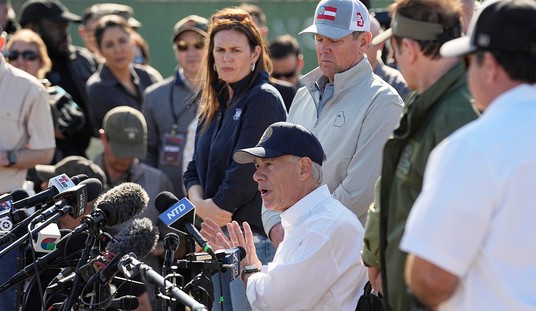Russia has been attacking Ukraine for 20 months now. Iran, through its terrorism partner Hamas, attacked Israel this weekend. China has been threatening to attack Taiwan.
The world is beginning to look a lot like the 1930s, when Japan attacked and overran much of China, and Nazi Germany and its then-ally the Soviet Union attacked and overran Poland and the Baltic States.
Former President George W. Bush has been ridiculed for describing an "Axis of Evil." But at this point, the axis of Russia, Iran and China seems to be acting in greater unison than the axis of Germany and Japan acted during World War II. And we have no reason to assume today's axis will turn on itself as when Hitler attacked the Soviet Union in June 1941.
No American military forces are currently fighting in Ukraine, none will surely be fighting in Israel, and no forces are currently stationed in Taiwan. But then there were no American military forces fighting in Asia or Europe in June 1941. Soon, there would be.
And conceivably, they could be again sometime soon. As military historian Eliot Cohen points out, no one lately has a good record of military predictions.
What is clear is that the United States will be called on to provide large numbers of conventional weapons to Ukraine and Israel for some unspecified time. This could be a strain for a nation concentrating in recent decades on producing high-tech weapons in small numbers.
In prolonged on-the-ground fighting, however, numbers matter. Production of artillery shells ("munitions") in adequate numbers was the issue that ousted one British prime minister and installed David Lloyd George in World War I (see Andrew Roberts' biography of Lord Northcliffe). And President Franklin Roosevelt's foresighted enlistment of top corporation executives made America the world's "arsenal of democracy" in World War II (see Arthur Herman's "Freedom's Forge").
Recommended
Those were the days when America was capable of building big things, in large numbers -- a capacity, as liberal writers Ezra Klein and Derek Thompson have lamented, we have lost.
One reason is that our leaders lack Roosevelt's capacity to pick men (and women) good at getting things done, which made big government look misleadingly easy for the next few generations of Americans. Roosevelt picked the leaders who built the Pentagon in 15 months (see Steve Vogel's "The Pentagon"), and the generals and admirals who assembled from almost nothing the 16-million-men military (see Eric Larrabee's "Commander in Chief" that produced the "absolute victory" that Roosevelt promised on Dec. 8, 1941).
Currently, American defense stockpiles are already strained in supplying arms and ammunition to Ukraine, and supplying Israel will strain them more. "The threat from China has not dissipated in the slightest while our defense spending and industry remain basically status quo as threats multiply," former Pentagon official Elbridge Colby wrote. "We should have been on a national mobilization footing for our defense industry a long time ago."
That would require a major shift in budget priorities, away from things such as the Biden administration's $400 billion forgiveness of college loan debt (with benefits tilted toward above-average-income borrowers). Moreover, thanks to inflation stoked by Trump and Biden COVID-era stimulus spending, government interest costs have skyrocketed. And will American armed forces, currently failing to meet recruitment goals, need to be expanded?
Israeli Prime Minister Benjamin Netanyahu is ordering a vigorous response to Hamas but in time will have to answer why his government was apparently so unprepared for the Oct. 7 attacks. And in a forthright statement on Oct. 10, President Joe Biden said unambiguously that "we're with Israel" and "we will make sure Israel has what it needs." But in time, he may need to answer why he and his appointees and colleagues in the Obama administration tilted U.S. policy toward Hamas' patron Iran, to the point of releasing $6 billion to Iran in September and appointing an Iranian sympathizer and possible spy to a national security post.
Meanwhile, America is bitterly split on partisan lines, with a narrowly Republican House (which nonsensically ousted its speaker), a narrowly Democratic Senate, and a Democratic president who, like Woodrow Wilson and unlike Franklin Roosevelt, has not taken Republicans into his councils as the storms of war gather. Stormy weather ahead.























Join the conversation as a VIP Member